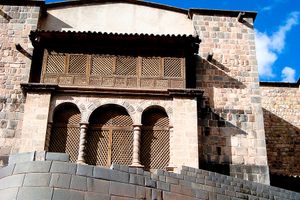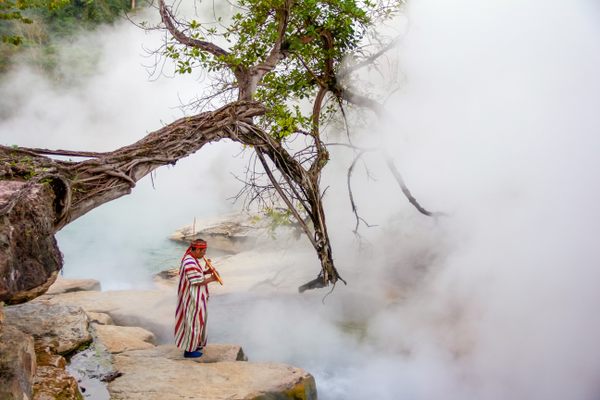About
Tambomachay is an Inca archaeological site located just outside Cusco. Its precise function is unknown, but it may have served as a ceremonial site, an Inca spa, or a military outpost—or perhaps a mix of all three.
Tambomachay sits on a hill about 4 miles north of Cusco, at about 12,150 feet (3,700 meters) above sea level. The structure consists of three stepped terraces of precise Inca stonework, with trapezoidal niches built into some of the retaining walls. The whole thing is built over, or into, a natural spring, which continuously feeds a series of small aqueducts, canals, and waterfalls built into the terraces.
The site is also known as El Baño del Inca, or the Bath of the Inca. This refers to one of the long-held theories about the site’s function: that it was a spa of sorts for the Inca ruler, and maybe for the wider Inca nobility. It’s a secluded and tranquil spot, and the constantly flowing water would certainly have provided for all the Inca’s spa-break needs. But there was probably more going on at Tambomachay than just high-altitude bathing.
As is evident at numerous sites throughout the Sacred Valley, water— and the control of water—had a ceremonial function for the Incas. They were able to control the flow of water with great precision, often bringing the water from springs way up in the mountains via stone channels and aqueducts, and finally to fountains and waterfalls at important points within their religious sites.
Considering the presence of precise water features at Tambomachay, and its construction on a natural spring, it’s likely that it served a ceremonial function connected with water. The trapezoidal niches could also have served a ceremonial purpose, perhaps to hold offerings (trapezoidal niches and openings are, however, ubiquitous in Inca architecture, from the finest temples to the most basic walls). It’s possible that all this could have been tied in with the notion of a spa: if the Inca ruler did come here to bathe and cleanse himself, that in itself could have been a ceremonial process.
Other archaeologists, such as Federico Kauffmann Doig, have argued that the primary function of Tambomachay must have been military. Kauffmann Doig pointed to the terraced nature of the site as evidence for this, the terraces being similar to defensive terraces found at other sites. Tambomachay is also located in close proximity to Puka Pukara, about 680 yards to the southeast, which was almost certainly an Inca military site.
As with so many Inca archaeological sites, there’s a strong possibility that Tambomachay served more than one purpose. It could well have been both a military outpost and a ceremonial center, and perhaps even a spa for overworked Inca rulers.
Related Tags
Know Before You Go
Tambomachay is located just off the Carretera 28G that winds its way out of Cusco and up towards a number of important archaeological sites including Saqsayhuaman, Q'enqo and Puka Pukara. It’s easy enough to take a bus from Cusco to Tambomachay; any bus going to Pisac can drop you off on the way. If you’re feeling energetic, it’s a nice walk from Tambomachay back down to Cusco (but best to do that before it gets dark). The site is open daily from 7 a.m. to 6 p.m. Entrance is included on the Boleto Turistico de Cusco (Cusco Tourist Ticket), which costs S/ 130 ($40 US) and allows entry to numerous sites in and around Cusco and the Sacred Valley. Or you can buy a partial tourist ticket for Circuit One that includes Saqsayhuaman, Q'enqo, Puka Pukara and Tambomachay and costs S/ 70 ($21 US).
Peru: Machu Picchu & the Last Incan Bridges
Discover Inca Wonders.
Book NowCommunity Contributors
Added By
Published
February 8, 2019































